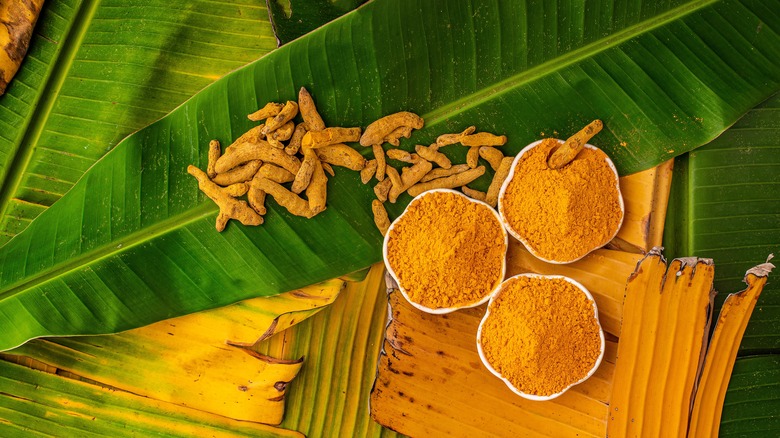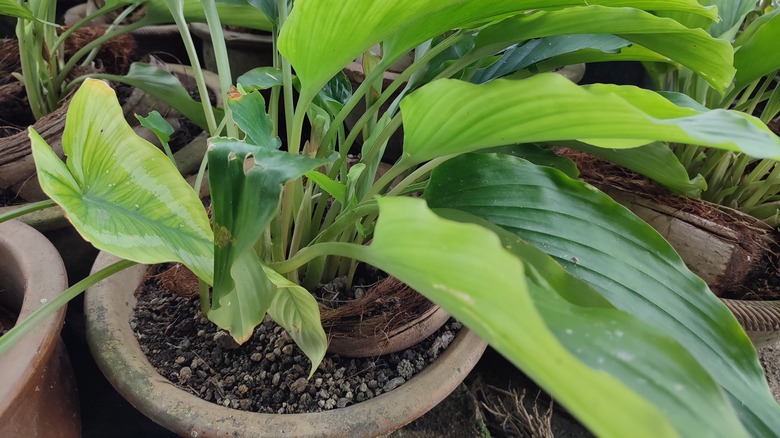How To Grow Turmeric If You Live In A Cold Climate
Have you ever wanted to grow turmeric in your garden but were afraid you couldn't because it's a tropical plant? Turmeric (Curcuma longa) can be grown as a perennial in USDA Hardiness zones 8 through 11, but that doesn't mean you can't grow it if you're in a colder zone. You just need to follow a few extra steps for a successful harvest year after year. Turmeric grows through underground rhizomes, and it's these that you'll harvest to use as a spice or coloring in cooking. Those plump below-ground rhizomes can be very resilient, but it can take up to 10 months for turmeric to be ready for harvest, and it's not frost-proof. Gardeners who live in colder climates can still grow turmeric quite successfully as an annual or by bringing it indoors to protect it over winter. Because of its long growing season, cold-climate gardeners will find that it's easiest to start turmeric indoors in pots and move it outside when the weather is warm. Turmeric is also one herb that will thrive when grown in a greenhouse.
In warm zones, gardeners generally harvest some of the rhizomes after the top leafy growth has died down in the fall, but they'll reserve a few for replanting or even leave them in the soil through winter. Even gardeners in zone 7 might be able to leave the fleshy roots in the soil and just cover them with a thick mulch to overwinter them. But if the ground freezes completely where you live, you'll want to do things a little differently. Here's how to grow turmeric in a cold climate for a rich, colorful rhizome harvest.
Growing turmeric in cold zones requires careful timing
To grow turmeric indoors, you'll first need to purchase a fresh rhizome or two. Choose a nice, fleshy one that has some growth buds or "eyes", as they're commonly known. Cut the rhizome into two or three pieces, making sure each part has a small number of buds. Plant each section 2 to 4 inches deep in a pot filled with premium potting mix, ensuring the buds point upwards. To keep the plant from going dormant indoors, keep it in a bright and warm location, ideally above 68 degrees Fahrenheit. A warming mat and grow light can help. Don't water the plant if you suspect it is dormant, and keep the soil moist once you start to see growth.
After the weather warms up enough, you can move your pot outdoors or transplant the turmeric into your garden. It will do well in a sunny spot, but if you experience high heat in summer, it'll appreciate some afternoon shade. To prevent rot, plant turmeric in well-draining, moist soil and water it sparingly. Harvest the rhizomes after the foliage turns yellow and dies down. To enjoy growing turmeric in the following year, store a couple of healthy rhizomes in a cool dry spot or plant these in a container to keep indoors. Now that you know how to cultivate turmeric in a cold climate, you may also like to know how to grow ginger from a piece of ginger you purchased at the market. You can even get a bit more adventurous and grow turmeric and culinary ginger plants in the same wide pot.

